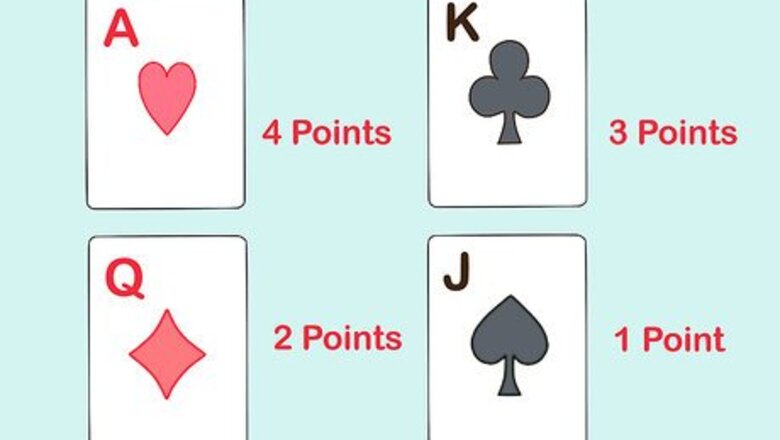
views
X
Research source
There is some strategy involved in bidding, but you can learn how to make successful bids by following some basic rules.
Making the Opening Bid
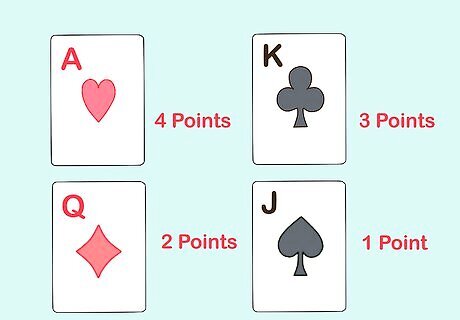
Count up your high-card points before you bid. Before you make your first bid in bridge, count up the points you have in your hand. Your high-card points include: Ace: 4 points each King: 3 points each Queen: 2 points each Jack: 1 point each
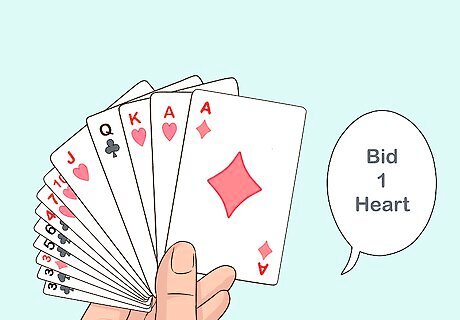
Bid only if you have 13 or more high-card points. Once you have added up your total high-card points, you will know if you should bid or not. You should never open the bid unless you have 13 or more high-card points. If you have less than 13, then you should pass. For example, if your hand includes 1 Ace, 1 King, 1 Queen, and 1 Jack as its only high-card points, then your total would be 10 and you should not bid. However, if you have 2 Aces, 1 King, 1 Queen, and 1 Jack, your total would be 14 and you should bid.
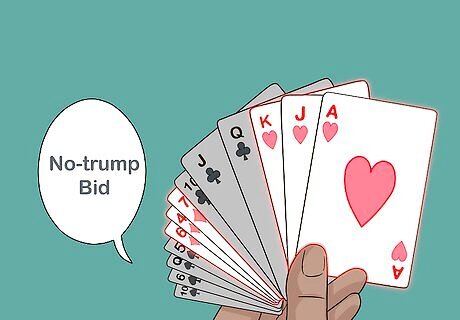
Bid one no-trump if you have between 15 and 17 points. A no-trump bid means that you will take a hand without any trump suit. If you have a balanced hand with 15 to 17 high-card points, then you have a good chance of doing so. A balanced hand means you have about the same number of cards in each suit. More specifically, it refers to a hand that has no voids or singletons (suits with exactly 0 or 1 cards respectively) and at most one double ton (a suit with exactly two cards). Do not open if you have a point range outside of 15 to 17 or an unbalanced hand distribution. Opening no-trump bids in bridge have very specific meanings, and you will only confuse your partner if you do not follow these rules.

Open with a 2-suit bid if you have 22 points or more. You can make a 2-suit bid if you have a very high scoring hand. In this case, it is highly likely that you will be able to fulfill the bid with an equivalent number of tricks (hands where you have the highest ranking card). For example, if you have 3 Aces, 2 Kings, 2 Queens, and 2 Jacks, your hand would contain 24 high-card points. This means that you should have no problem making a bid of 2 or more suits.
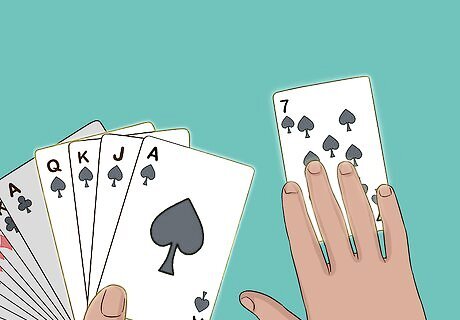
Choose your high-card suit to open. If you open the bid, then you will choose the card that starts the round. Make sure that you choose a card from your high-card suit, which are the cards that you have the most high-card points in. For example, if you have 7 high-card points in spade cards, such as an Ace, Queen, and Jack of spades, then open by laying down a spade. The card you choose will also help you to signal to your partner which card is your strongest suit, so choose wisely.
Observing the Rotation Rules in Bidding

Allow the dealer to bid first. The dealer is always the first to bid in a round of bridge. Then, play can continue going clockwise from the dealer. If the dealer wishes to pass, then they can say “pass.”
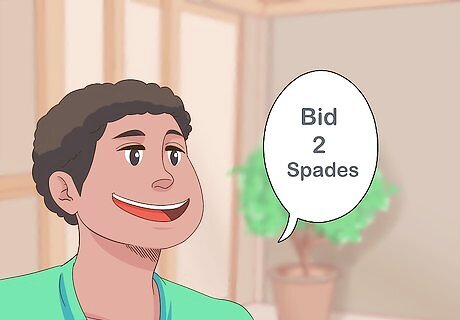
Make a bid higher than or equal to the previous player’s bid. You cannot bid lower than the previous player. Therefore, if the player before you has bid 1 heart, then you would at least have to match that bid with 1 spade, 1 club, or 1 diamond. (You cannot bid with the same suit as the previous player.) You may also bid higher, such as 2 spades, 2 clubs, or 2 diamonds, instead of 1 of these suits. Remember that you can say “pass” if you do not want to bid.
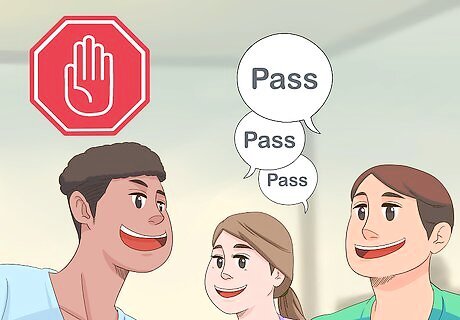
Stop taking bids once 3 players in a row have said “pass.” Bidding continues until 3 consecutive players have passed on the chance to bid. The last bid that was made will become the “contract,” and that pair of players will need to complete the number of tricks they bid plus 6. At this point, the game begins and players can start playing tricks, or putting down cards. The player who names the final contract suit first is called the “declarer” and their partner is the “dummy.” The person on the left side of the declarer will then make the opening lead. The dummy puts their cards facing up on the table so that the declarer can play with both their cards and their partner’s cards.



















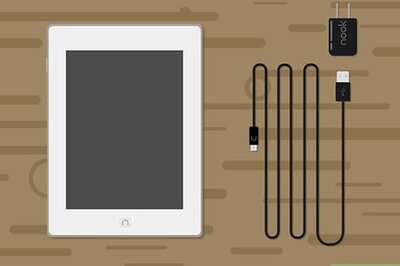
Comments
0 comment